Don't wanna be here? Send us removal request.
Text
Land Art and the Invisible Tree
I love the concept of land art. Often we think of art as something formal that we see in a museum or an art gallery, that was made to be purposely looked at and observed. However, with land art, the viewer often stumbles upon it accidentally without searching for or expecting it. There is something so beautiful about this concept, and it really makes me think about what the purpose of art is in the first place. Art is meant to be expressive not only for the artist, but to the viewer. Land art forces viewers to see it–they did not pay for a museum ticket or stand in line at a fancy gallery to catch a glimpse of it. Land art is free, and often takes us by surprise. I remember going to the Botanical Gardens in New York City once, and seeing a sculpture of a caterpillar made out of a cut shrub. I was taken aback by it because I was not expecting it—it was just there. This surprise factor of land art is what draws me to it—you are almost always surprised by its existence. Take Daniel Siering’s and Mario Schuster’s Invisible Tree project (image posted separately). The two found a tree in the middle of field and wrapped cellophane around part of its trunk. They then used spray paint to color the cellophane in a way that mimicked the background behind the tree, making it look like the tree had been cut, and the top part was floating. Not only is this a captivating and creative idea, but I am sure the piece comes as a surprise to anyone who may walk by it. It is unexpected, surprising, maybe even startling or strange—and that is what makes it so beautiful.
Posted 12/11/2020
0 notes
Text
On Atul Bhalla and Water
Atul Bhalla’s fascination with water really stuck with me. I, too, often fixate on water, but mainly for other reasons. I’ve always been interested in both physics and circles. I remember taking physics in high school and learning about waves—the unit captivated me and heavily influenced my own art. I began drawing wave patterns and optical illusions, and started doing my own research on the tide and its connection to physics to fuel my own personal interest. I also began working with water to alter the way colors looked and to change the texture of the paper I used. As for circles, I am not sure why I am so drawn to them. Maybe because they are fully complete. Maybe because they are, by nature, perfect. Circles are also found in water—when I was younger, I loved to throw things into water just to see the rings that would form.
What I find interesting about my own fixation on water as well as Bhalla’s is how both show just how intersectional and intriguing water is. We both fixate on it for different reasons—mine due to personal fascination and aesthetics, and his due to environmental and social issues. We also both include this interest in our art—I do so by utilizing water physically and integrating wave patterns into my work, and him by depicting items found in water and photographing himself immersed in it to show the environmental and social struggles related to it. It is amazing how one thing can truly have an impact in so many different ways to different people.
Posted 12/11/2020
0 notes
Photo

Atul Bhalla, On the Edge of the Sea, latex print on fabric, 20 x 35 x 21 feet, 2019.
Posted 12/10/2020
0 notes
Photo
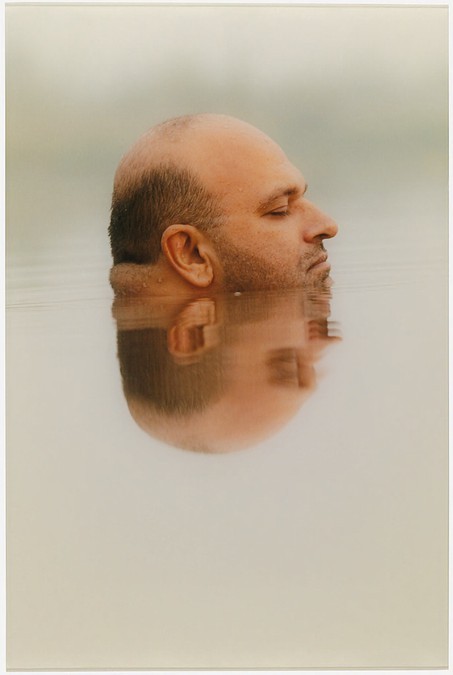
Atul Bhalla, I Was Not Waving But Drowning II, archival pigment print, #5 of a sequence of 14 images, 12 x 18 inches, 2005.
Posted 12/10/2020
2 notes
·
View notes
Photo
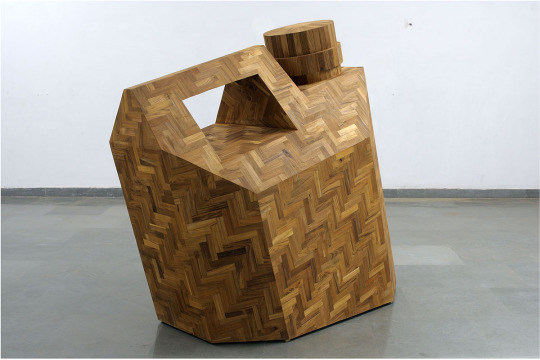
Atul Bhalla, Nothing Reached Home, wooden construction, 5 x 4 x 6 feet, 2009.
Posted 12/10/2020
#atul bhalla#climate change#conversation#polution#climate crisis#environmentalist art#environmentalism art#environmentalism
0 notes
Photo
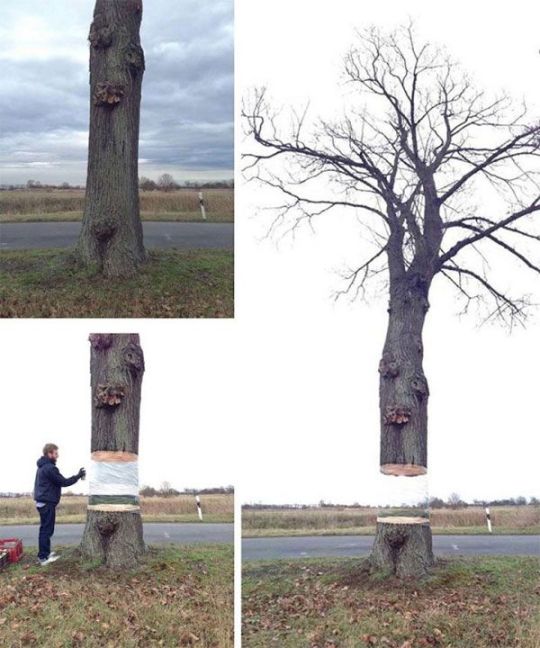
Quote: “Invisible Tree Graphic designer Daniel Siering and art director Mario Schuster collaborated to masterfully mimic the rural German landscape straight through the middle of a tree trunk, giving the illusion that the tree has been cut in half. This act of deception was achieved simply by wrapping the tree in plastic sheeting and recreating the background landscape and the bisected trunk through detailed spray painting.” (source: Land8 Landscape Architects Network https://land8.com/10-top-examples-of-land-art-from-around-the-world/ )
Posted 12/9/2020
0 notes
Photo

Snow art by Simon Beck in the Savoie Valley.
Posted 12/9/2020
0 notes
Photo

Giant Clothespin Designed by Turkish artist Mehmet Ali Uysal.
Posted 12/9/2020
2 notes
·
View notes
Photo

Sand art creation by Andres Amador.
Posted 12/9/2020
2 notes
·
View notes
Photo

Jaishri Abichandani, The Diamond at the Meeting of My Thighs, 2015
Wood, cardboard, epoxy, wire, glass, paint27 × 11 × 11 in68.6 × 27.9 × 27.9 cm
This piece is being sold for $10,000.
Posted 11/25/2020
0 notes
Photo
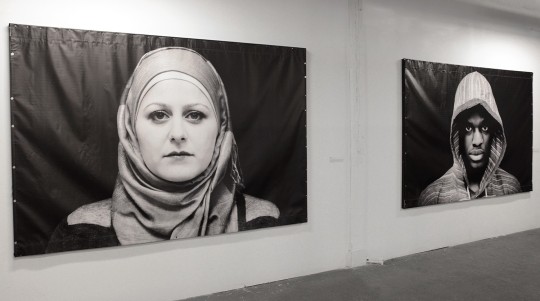
Loving Blackness, Asian Arts Initiative artist Tracy Keza/Studio Revolt 2018 (curated by Jaishri Abichandani)
Posted 11/25/2020
1 note
·
View note
Text
Jaishri Abichandani
I really enjoyed listening to Jaishri Abichandani and learning about her work, as well as researching her afterwards. What stuck out to me the most about her work is the show she helped curate for the Asian Arts Initiative titled “Loving Blackness”. This exhibition was made up of work from more than twenty black and/or Asian artists, and was meant to express solidarity between the two groups. It shows both the shared experiences of the two communities and the ways they are similar, as well as how they uplift one another through those experiences. Part of the exhibit’s description states, “Black and Asian communities have coexisted side by side across the world for centuries. Our history includes . . . indentured servitude and slavery. . . . It is fraught with tensions first inflamed by the horrors of colonialism and has now been transformed into a tangled web of inequities. . . . This historic friction has provided opportunities for solidarity . . . while acknowledging our collective debt to the efforts of the civil rights movement in gaining liberties”. I think this really adds to the idea of intersectionality, especially since so many marginalized groups have faced similar challenges. Of course, different communities experience things differently, but the shared experiences between groups often draw them together.
Posted 11/25/2020
0 notes
Text
Quotes by Jean-Michel Basquiat
“I was a really lousy artist as a kid. Too abstract expressionist; or I'd draw a big ram's head, really messy. I'd never win painting contests. I remember losing to a guy who did a perfect Spiderman.”
“I don't listen to what art critics say. I don't know anybody who needs a critic to find out what art is.”
I think these quotes both encompass Basquiat’s character really well. Having to fend for himself as a homeless teenager for so long, he gained a strong sense of independence rather than being reliant on others, which made him more confident in his work. He rarely cared if others did not like his work, so long as he did. 11/9
0 notes
Text
On Jean-Michel Basquiat
Jean-Michel Basquiat’s inspiration comes from many places, however much of his work was inspired by a number of rather traumatic events in his life. When he was eight years old, Basquiat was hit by a car while playing in the street in New York City, resulting in him breaking his arm and injuring other parts of his body. While this was of course a tragic experience, especially as a young boy, the way it impacted his art is fascinating, and often overlooked. His experience led him to read the medical textbook Gray’s Anatomy, where he recalls being drawn to the anatomical drawings illustrated within the book. Years later we can see remnants of this in hid art—particularly the way he represents the human body in a distorted and somewhat geometric way. His characters sometimes seem broken or skull-like yet lively at the same time.
Another event that influenced his art was when he was thrown out of his home by his father at seventeen after dropping out of school. Having no money, home, or job, Basquiat began selling sweatshirts and postcards with his art. His work is what allowed him to survive while being impoverished, relying on a poor diet containing “copious amounts of cheap red wine and 15 cent bags of Cheetos” (sothebys.org). The anger that his situation left him is expressed deeply in his artwork later on, which is part of the reason why he became so successful. He was driven by his emotion, and he compiled these emotions into his artwork which paved the way for him to become one of the most famous contemporary and neo-expressionist artists of all time.
Posted 11/9/2020
0 notes
Photo

Political cartoon from 2016. Posted 11/3/2020.
0 notes
Photo
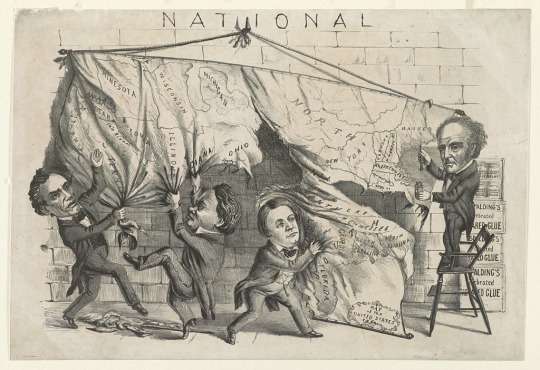
Political cartoon from the 1860 Presidential election between Abraham Lincoln, John Bell, John Breckinridge, and Stephen Douglas. I’ve always enjoyed the artistic perspective of political cartoons, and this one in particular reminds me of what is probably going to happen tomorrow...
Posted 10/2/2020
1 note
·
View note
Text
On Sasha Phyars-Burgess
I really loved viewing Sasha Phyars-Burgess’s work. I really like how it focuses on issues that are personal to her while also creating s space for the viewers to interpret the story themselves. It was also really cool to see work from a recent Cornell graduate. However, I was particularly struck by her decision to photograph in black and white rather than color, as this is often a less popular choice among modern photographers. It does make sense to me in a way, though—color can sometimes fill a void for us and explain things to us rather than force us to visualize the reality of the scene ourselves. Black and white photography leaves the viewer space to fill in what is missing and form their own perception of the scene or subject’s reality. Phyars-Burgess’schoice to use black and white really adds depth to her photographs as well, in my opinion. This is a concept I have explored in my own artwork and photography as well, particularly when using film. The lack of color and vibrance that results from shooting in black and white film creates a sense of mystery within each photo and if done right, can really bring the observer into the piece. I think this is part of the reason why Phyars-Burgess’s work is so captivating—her technical and compositional choices help the viewer really understand her life as a Trinidadian-American, her life at home, and her experiences and perspectives as a black woman.
Posted 10/2/2020
0 notes